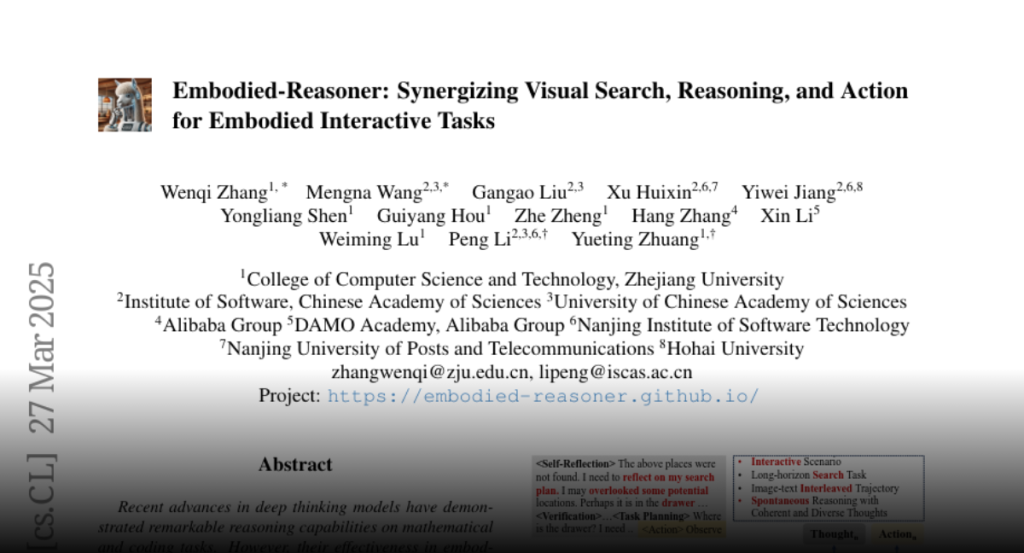Recent advances in deep thinking models have demonstrated remarkable
reasoning capabilities on mathematical and coding tasks. However, their
effectiveness in embodied domains which require continuous interaction with
environments through image action interleaved trajectories remains largely
-unexplored. We present Embodied Reasoner, a model that extends o1 style
reasoning to interactive embodied search tasks. Unlike mathematical reasoning
that relies primarily on logical deduction, embodied scenarios demand spatial
understanding, temporal reasoning, and ongoing self-reflection based on
interaction history. To address these challenges, we synthesize 9.3k coherent
Observation-Thought-Action trajectories containing 64k interactive images and
90k diverse thinking processes (analysis, spatial reasoning, reflection,
planning, and verification). We develop a three-stage training pipeline that
progressively enhances the model’s capabilities through imitation learning,
self-exploration via rejection sampling, and self-correction through reflection
tuning. The evaluation shows that our model significantly outperforms those
advanced visual reasoning models, e.g., it exceeds OpenAI o1, o3-mini, and
Claude-3.7 by +9\%, 24\%, and +13\%. Analysis reveals our model exhibits fewer
repeated searches and logical inconsistencies, with particular advantages in
complex long-horizon tasks. Real-world environments also show our superiority
while exhibiting fewer repeated searches and logical inconsistency cases.

